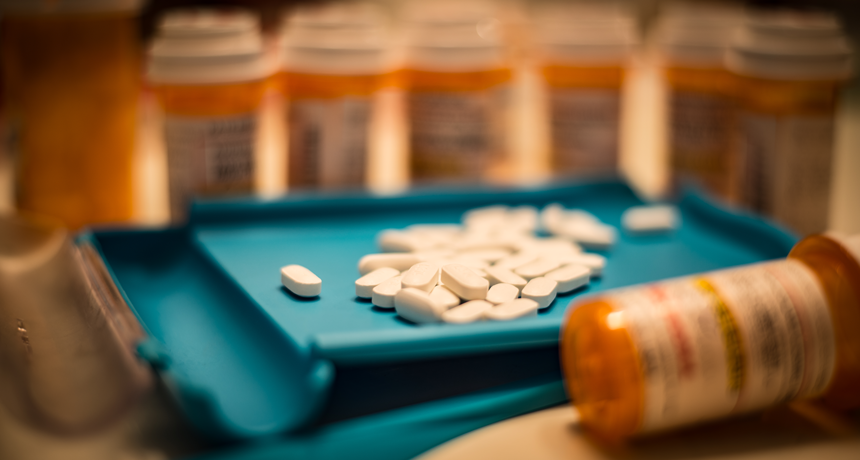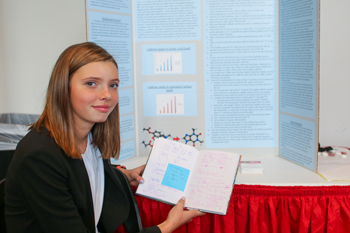Leftover opioids? Teen finds possible way to kill such pills
Chemically deactivating them could make disposal easy, reduce risk of misuse

Patients can easily overdose on opioid medications. Now a teen has come up with a strategy to chemically deactivate unused pills. This would make them useless to thieves or addicts.
Darwin Brandis/iStock /Getty Images Plus
By Sid Perkins
Washington, D.C. — Opioids are powerful and addictive painkillers. Sometimes patients don’t need to take all of the pills they were prescribed. If such leftovers make it into the wrong hands, dangerous problems could ensue. So 14-year-old Mercedes Randhahn of Ogden, Utah, looked for — and may have found — a way to chemically deactivate unused opioids.
That feat qualified the teen to compete here, late last month, in the ninth annual Broadcom MASTERS competition. In fact, her work was so impressive it helped earn her a $2,500 award at the event.
MASTERS stands for Math, Applied Science, Technology and Engineering for Rising Stars. This program for middle-school researchers was created by Society for Science & the Public (which publishes Science News for Students). Broadcom Foundation, headquartered in Irvine, Calif., sponsors the event. It brings together 30 finalists each year to tackle team challenges. This year, Mercedes was one of them.
Why kill pills?
Unused prescription medicines can be a big problem, especially if they are dangerous and addictive, as opioids are. If such pills aren’t stored safely, someone could get hold of them and accidentally overdose. Unused pills might even be a tempting target for thieves, says Mercedes.
Some law-enforcement agencies provide a safe place to drop off unused pills. Some pharmacies do too. But a lot of people might find that inconvenient, notes the teen, now a ninth-grader. She wanted to make it much easier for people at home to render such pills harmless. And chemistry, she suspected, offered a way to do that. The girl explored this idea in a science fair project last year.
Mercedes faced many challenges. Chief among them: She was too young to legally obtain and experiment with opioids. So she needed a stand-in. Opioid drugs are part of a group of chemicals called alkaloids, she found. When these substances react with acidic compounds, they can make relatively harmless salts.
Morphine and cocaine are alkaloids. But they, too, are addictive and illegal for teen testing. Mercedes ended up working with another alkaloid: caffeine. It’s far less toxic.

Next step: Mercedes scouted for an acid that would be safe to use — and commonly found around the house. She chose vinegar. (That liquid, often used in cooking and cleaning, is a very diluted solution of acetic acid.)
The teen mixed caffeine and vinegar, then added activated carbon. That last substance has large numbers of tiny pores in it where chemical reactions can take place. Those pores also can hold molecules once they’ve formed. Her hypothesis was that the vinegar and caffeine would react inside those pores. The resulting salt molecules would then remain locked in those pores. That should prevent the caffeine from being reactivated, she says.
Mercedes chemically analysed her caffeine-vinegar-carbon mix and then compared it to caffeine alone. She also compared the solution to a mix of just vinegar and carbon — no caffeine. The vinegar reactions indeed deactivated the caffeine, she found. The teen now suspects a similar technique might do the same to opioids.
Good work rewarded
STEM stands for Science, Technology, Engineering and Mathematics. Broadcom MASTERS awards first- and second-place prizes in each of these categories. For her qualifying project, Mercedes nabbed the $2,500 second-place award in Engineering.
In most student-science competitions, the majority of a finalist’s score is based on a qualifying entry project. Broadcom MASTERS doesn’t work that way. Roughly four-fifths of the finalists’ scores are based on the creativity and teamwork each showed in helping solve on-the-spot research challenges.







